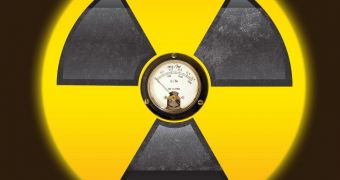Governments may be using the wrong guidelines when trying to establish whether or not a population should be evicted form areas surrounding nuclear power plants, or that lie close to the site of a nuclear accident. A new study shows that these guidelines may be too strict and conservative.
Investigators with the Cambridge-based Massachusetts Institute of Technology (MIT), led by experts Bevin Engelward and Jacquelyn Yanch, say that until now very few studies have focused on the health effects of long-term, steady exposure to radiations.
Thus far, all researches on the issue have been carried out with experimental setups in which blasts of radiations were directed at test objects or animals. However, no group thought of conducting a long-term study to quantify the health effects of prolonged exposure to radiation above background levels.
In the new study, unsuspecting lab mice were subjected to radiation levels around 400 times higher than the background. After five weeks of exposure, researchers could identify no DNA damage in any of the test animals.
Details of the new investigation appear in the latest issue of the esteemed journal Environmental Health Perspectives. At this time, the US government has a strict evacuation policy in place, which enters effect as soon as radiation levels in an area exceed eight times the background.
What the new study suggests is that the measure may not be worthwhile to implement, given the financial and emotional costs of relocating hundreds or thousands of families.
“There are no data that say that’s a dangerous level. This paper shows that you could go 400 times higher than average background levels and you’re still not detecting genetic damage,” says Yanch, who holds an appointment as a senior lecturer in the MIT Department of Nuclear Science and Engineering.
“It could potentially have a big impact on tens if not hundreds of thousands of people in the vicinity of a nuclear powerplant accident or a nuclear bomb detonation, if we figure out just when we should evacuate and when it’s OK to stay where we are,” the expert adds.
According to the team, had the mice been given the full dose of radiations they received over the course of five weeks, all at once, the animals would have most likely suffered massive DNA damage. However, steady exposure did not affect their genetic material to any discernible degree.

 14 DAY TRIAL //
14 DAY TRIAL //